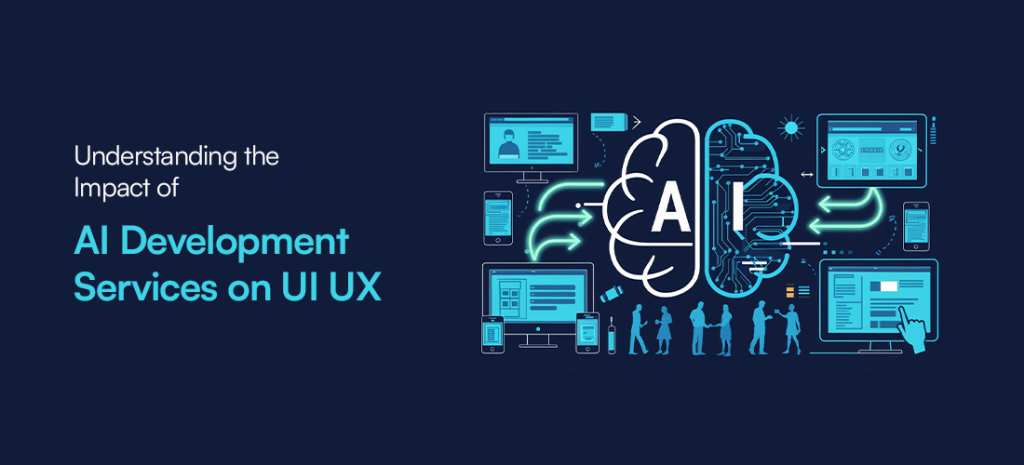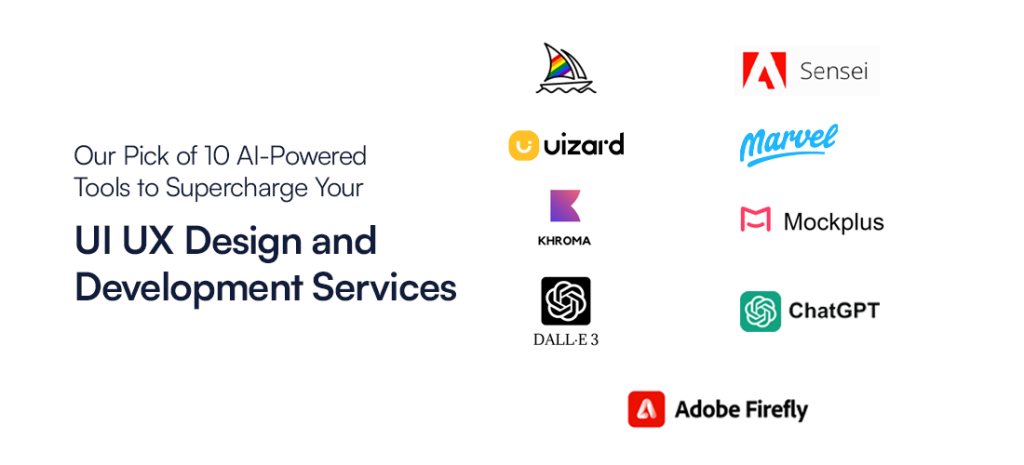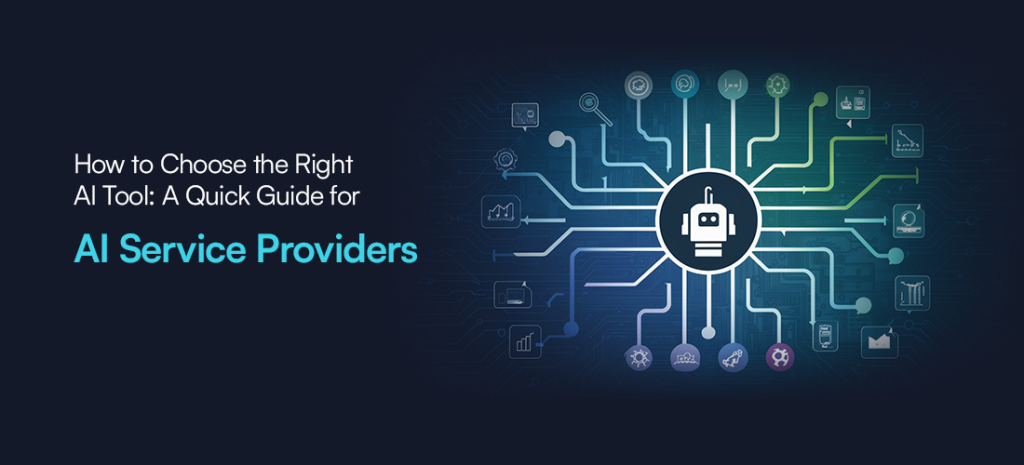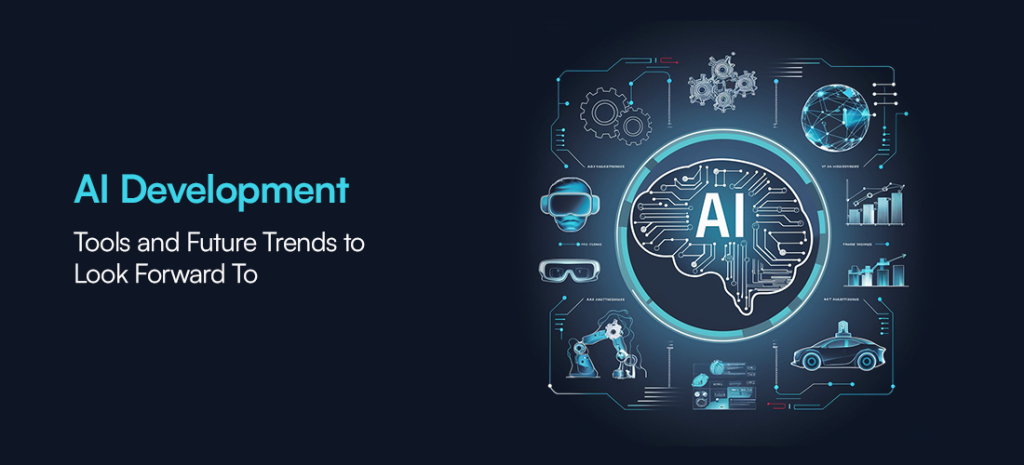
Aug 7, 2024

Design is fueled by the relentless evolution of artificial intelligence. UI UX design, once reserved only for human ingenuity, is now being redefined by intelligent algorithms. It’s the age of AI development, and none can refute how crucial it is for designers to stay ahead of the curve in order to stay relevant.
When you use AI to automate mundane tasks, generate creative concepts, or ideas or gain data-driven insights to predict user behavior – you realize how AI has become an indispensable companion in your creative journey. So, if you are a seasoned professional or just starting as a newbie in the design industry – here you will find the answers you are looking for.
This blog will delve into our top 10 AI tools that we believe are revolutionizing the UI UX design and development services and processes and how these tools can be the magic wand for designers to create exceptional user experiences.

AI, as we know it, can influence processes across the design lifecycle. In the research phase, there are tools to analyze vast amounts of user data to identify trends and preferences, enabling designers to develop user personas with greater accuracy and depth. During prototyping, AI can generate design options based on predefined parameters, and AI-driven testing tools go further with simulations of user interactions and provide valuable feedback on design performance. For AI service providers, the ways in which these tools can be used are infinitive, but there are also challenges to consider.
Benefits of AI Tools
Challenges and Considerations
In AI development, while there are immense opportunities with the use of AI tools, it is also essential to acknowledge the potential challenges that we can encounter; afterall AI should be used as a tool to augment human capabilities rather than replace them.

Midjourney’s AI prowess is to generate images from textual descriptions. Though its primary ability is centered around its artistic capabilities, its potential in UI UX design is quite vast. Midjourney can help in concept creation, explore styles and layouts, research color palettes, and zero in on other UI elements. As with all AI development tools, Midjourney should be used as a starting point and not as a final output. Generated concepts and ideas should be refined and iterated to make them personalized.
Key features and benefits
Adobe Sensei is a powerful AI engine integrated into Adobe’s Creative Cloud suite. While not a standalone tool, its AI-driven features significantly enhance the UI UX design and development services process. Use it to mine data, gain insights, and streamline cross-team workflows and design.
Key features and benefits
Use Uizard – an AI-powered design tool to transform screenshots, hand-drawn sketches, or even simple descriptions into interactive prototypes or digital designs. It’s game-changing in AI development services as it allows designers looking to quickly iterate on design concepts.
Key features and benefits
Marvel’s AI Design integrates a suite of AI-powered features that streamline the design process within the Marvel platform. Do wireframing, prototyping, and gather real time feedback for an iterative design process.
Key features and benefits
Jasper works as a large language model (LLM) to generate content, translate text from different languages, and answer queries. So, how can Jasper be valuable to UI UX designers as an AI development tool? As Jasper is more adaptable, it can assist in generating design-related copy, such as button labels, microcopy, and feature descriptions, or apply Jasper to a larger range of tasks.
Key features and benefits
A color palette generator in the AI service providers’ arsenal – to help designers discover harmonious color combinations. It goes beyond traditional color wheels by analyzing image libraries and understanding color relationships.
Key features and benefits
Want interactive prototypes? Mockplus is your guy. As AI development tools go, Mockplus is speedy and can translate your ideas into interactive digital designs, incorporating AI to streamline the process. While not exclusively AI-driven, its AI features enhance efficiency and design quality.
Key features and benefits
A powerful image generation tool, Dall-E 3 is capable of creating highly photo-realistic and detailed images based on text descriptions. Dall-E can render intricate details in generated images based on detailed precision prompts. For UI UX, it can be an asset when there is a need to generate design concepts, visual assets, and UI elements.
Key features and benefits
ChatGPT must be the most popular one on our list, its popularity gives it an edge over other lesser known AI development services tools. It is capable of generating human-quality text formats. It is based on a large language model and while it is not a design tool, it can be used to assist with various design-related tasks.
Key features and benefits
A generative AI development tool that can create images, videos, and designs based on text prompts. It’s designed to work within the Adobe Creative Cloud ecosystem. Firefly’s AI model has been trained to recognize connections between images and text and claims to be trained using solely open source images, making it a rare inclusion and an ethical contender among other generative AI tools.
Key features and benefits
Also Read –How UX Design Services Can Transform Your Digital Product

The ideal AI tool for your UI UX projects requires careful consideration of various factors. There’s never a one-size-fits-all solution. The choice always depends on your specific needs, the project requirements, and your team’s expertise.
Factors to Consider
Tips for Integration

In UI UX design it can be considered that AI is still in its nascent stages, but it promises an exciting future. We can anticipate advancements in generative AI creating even more sophisticated and precision design concepts, while AI-driven user research will provide a deeper and insightful look into user behavior.
The convergence of AI with augmented reality (AR) and virtual reality (VR) will reshape how we interact with digital environments. Expect to see AI-powered personal assistants becoming integral to user experiences, offering tailored recommendations and support. As AI matures, designers will collaborate more closely with AI systems, forming a symbiotic relationship to push the boundaries of creativity and user satisfaction.
AI integration into the UI UX design process is no longer a futuristic concept but a tangible reality. In fact, it is a widely used asset in the development of ideas, concepts, and prototypes. The AI development tools explored in this blog represent just a glimpse of the potential that artificial intelligence holds for transforming how we design digital experiences. By harnessing the power of AI, designers can elevate their work, enhance efficiency, and create truly exceptional user interfaces.
While AI offers immense possibilities, it’s essential to remember that AI is a tool and should be used as one. To replace human intelligence with AI generated content would end creativity and replace it with machine noise. The future of UI UX design lies in a harmonious collaboration between designers and AI, where human ingenuity and machine intelligence converge to create innovative and user-centric solutions.
Embrace the AI revolution, experiment with these tools, and unlock your full design potential.